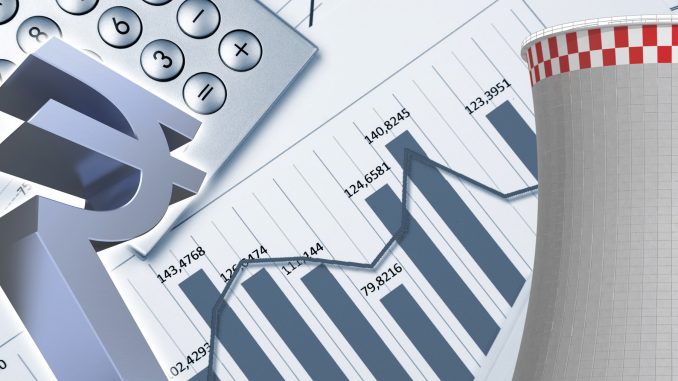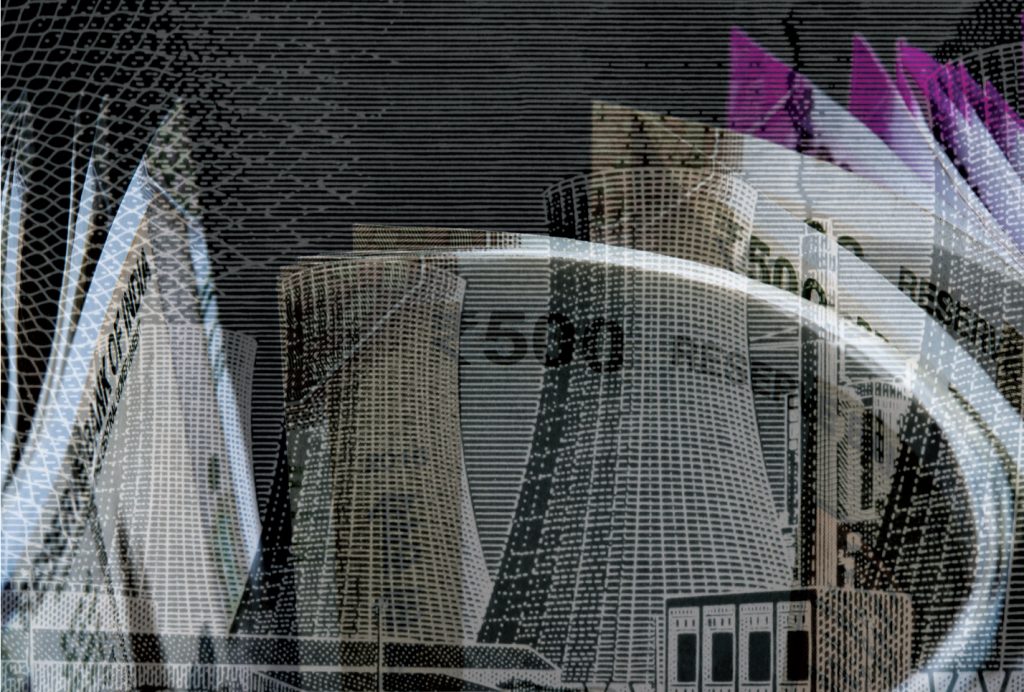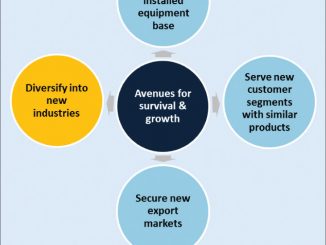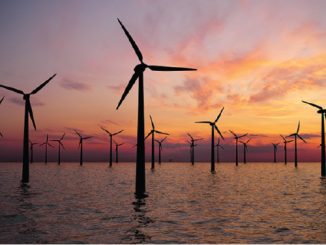
The power sector witnessed substantial financing activity in the past year. The merger and acquisition (M&A) deals in the sector, especially renewables, were quite positive, with several local and foreign buyers showing interest in acquiring clean energy portfolios in India. In the conventional segment, consolidation deals formed a large part of the domestic activity. On the equity side, a major highlight was the debut of the new investment avenue, infrastructure investment trusts (InvITs). On the debt side, financially distressed accounts resulted in an increasing number of players adopting the debt restructuring route. The bond market brimmed with activity as well, wherein power majors actively raised funds through the issue of offshore bonds. Meanwhile, several states that joined the flagship scheme, the Ujwal Discom Assurance Yojana (UDAY), initiated the process of issuing bonds. Further, a spate of loans were sanctioned by domestic and multilateral financial institutions, to fuel a range of initiatives of private players and state utilities, with an increased focus on the renewable energy generation and transmission segments.
Mergers and acquisitions
- In a landmark global M&A deal in September 2017, ABB bought the Industrial Solutions Business of General Electric for $2.6 billion, putting on hold its $3 billion share buy back programme as a result. ABB expects the deal to improve the company’s margins by means of potential cost synergies, amounting to $200 million annually, post five years of completion of the deal.
- In August 2017, in a key M&A deal, GMR Energy Limited (GEL) entered into an MoU with an external party to sell its 220 MW barge-mounted gas-based power plant at Kakinada in Andhra Pradesh for $63 million, as it has not been generating energy since 2013 due to shortage of natural gas. Meanwhile, in November 2016, GEL completed the transaction of allotting 30 per cent stake to Malaysia’s Tenaga Nasional Berhad (TNB). GEL and TNB had announced a strategic partnership in May 2016.
- In July 2017, the deadline for the deal between JSW Energy Limited and Jaiprakash Power Ventures Limited (JPVL) to acquire the 500 MW Bina thermal power plant (TPP) was postponed to December 31, 2017, from the earlier deadline of May 31, 2017. The planned acquisition has been stalled because the lenders did not approve of the deal due to the ongoing debt restructuring of JPVL. Meanwhile, JSW has announced that its proposed acquisition of the 1,000 MW Tamnar project from Jindal Steel and Power Limited is on track and is expected to be completed before June 2018.
- In April 2017, marking its entry into the Indian renewable energy segment, an infrastructure fund of Australia’s Macquarie Group agreed to buy 330 MW of operational solar assets from renewable power producer Hindustan Power projects Private Limited. Of the $600 million deal value, $250 million is the equity and about $350 million is the debt associated with the projects.
- In February 2017, Inox Renewables Limited announced its exit from the wind farm business by selling its operating projects to Chennai-based Leap Green Energy. These assets, adding up to a total of 260 MW, are located in Rajasthan, Maharashtra, Madhya Pradesh and Tamil Nadu. The Inox Group plans to focus on its core business, including that of wind turbine manufacturing.
- In February 2017, overseas investor JERA Co., Inc. bought 10 per cent stake in ReNew Power Ventures Private Limited for $200 million through the subscription of newly issued shares. The deal values ReNew Power at $2 billion. Set up in 2015, JERA is an equal joint venture (JV) between Japan’s largest utility, Tokyo Electric Power Co., and the Chubu Electric Power Co. It operates 6 GW of energy assets globally.
- In January 2017, in a significant merger deal in the renewables space, Orient Green Power Limited entered into a non-binding agreement with Infrastructure Leasing and Financial Services Limited for merging their wind energy assets. The merged entity will have a total operational wind capacity of 1.2 GW.
- Also, in January 2017, another renewable player, Greenko Energy Private Limited (GEPL) reportedly acquired the 100 MW Sorang hydroelectric project at Kinnaur in Himachal Pradesh from Abu Dhabi’s National Energy Company, PJSC (TAQA) for Rs 6.5 billion. This is the second instance where GEPL has acquired distressed renewable assets in India from a global energy utility, after the acquisition of SunEdison’s power assets in the country in September 2016.
- In January 2017, NTPC Limited acquired the 1,000 MW Chhabra TPP at Baran in Rajasthan. AES India, Adani Power, and a joint venture of Tata Power-ICICI were reportedly in the race for acquiring the power project. The deal came into effect through a tripartite MoU signed by NTPC, Rajasthan Vidyut Utpadan Nigam Limited and Rajasthan Urja Vikas Nigam Limited. NTPC will take over four 250 MW operational units (at a cost of Rs 50 billion) and two 660 MW under-construction units of the coal-based power plant. The deadline for the completion of the deal was recently extended from May 2017 to September 2017.
- In September 2016, Tata Power International Pte. Limited and ICICI Venture Fund Management Company Limited launched a platform for investing in operational and upcoming projects (at advanced stages of completion) in the thermal and hydro power segments as well as the power transmission segment. Co-sponsored by Tata Power International and ICICI Venture, the platform has a commitment for investment from partner investors including Canada-based pension fund Caisse de dépôt et placement du Québec, the Kuwait Investment Authority and Oman’s State General Reserve Fund.
Major loan agreements
During the past year, leading power sector financiers, the Power Finance Corporation (PFC) and the Rural Electrification Corporation (REC) signed a number of loan agreements with public sector utilities across the generation, transmission and distribution segments.
- In August 2017, PFC signed a memorandum of agreement with Meja Urja Nigam Private Limited to provide a loan of Rs 66.08 billion to the latter, for the development of the 1,320 MW Meja coal-based power project in Allahabad, Uttar Pradesh. Meanwhile, in June 2017, in one of the largest loan offerings by the PSU to state discoms, PFC provided a Rs 36 billion loan to four distribution companies of Uttar Pradesh for building infrastructure for new connections. Earlier, in March 2017, it sanctioned Rs 91.28 billion to provide financial assistance to power utilities in Tamil Nadu. In the same month, PFC sanctioned a loan of Rs 27.03 billion for the development of the 660 MW Unit 5 of the Sagardighi TPP in Murshidabad district, West Bengal, by the state utility.
- In April 2017, REC signed an MoU with Tamil Nadu Generation and Distribution Corporation Limited and Tamil Nadu Transmission Corporation Limited, to provide financial assistance of Rs 600.63 billion and Rs 256.6 billion respectively. Further, in March 2017, it signed an MoU with the Damodar Valley Corporation for financial assistance of Rs 46.5 billion. In addition to this, in February 2017, it signed two agreements for financial assistance with Jharkhand’s power utilities, Jharkhand Bijli Vitaran Nigam and Jharkhand Urja Sancharan Nigam, for Rs 81.5 billion and Rs 70 billion respectively. During the same month, REC signed another MoU with power utilities in Karnataka for extending Rs 390 billion as financial assistance till March 2022.
- In April 2017, the European Investment Bank approved a Euro 200 million (Rs 14 billion) long-term loan for the State Bank of India (SBI) to finance solar projects across the country. The loan will support a total investment of Euro 650 million in five large-scale solar photovoltaic (PV) power projects under the National Solar Mission, four of which have already been identified.
- In September 2016, the National Bank for Agriculture and Rural Development approved a loan of Rs 2.05 billion for a 10 MW solar plant at Haryana Power Generation Corporation Limited’s 1,367.8 MW Panipat TPS. The loan has been sanctioned under the Rural Infrastructure Development Fund.
Loan restructuring and refinancing
The past year also saw some significant debt restructuring deals. In a first in the infrastructure space, lenders to Adhunik Power managed to close the first successful sale under the strategic debt restructuring (SDR) scheme. In other developments, lenders of private major JPVL invoked the SDR, while GMR Energy’s subsidiary company completed it.
- In July 2017, a consortium led by Canara Bank invited expressions of interest (EoIs) from buyers to acquire a 270 MW TPP in Nagpur, Maharashtra. The announcement came after the plant came under the corporate debt restructuring plan. On behalf of the consortium, IDBI Capital Markets and Securities Limited invited bids from buyers. The project was commissioned in 2013-14, but it is not operational due to non-availability of power purchase agreements.
- In May 2017, private developer Essar Power Limited asked its lenders to work out a debt recast plan for its group company Essar Power Gujarat Limited, which operates a 1,200 MW imported coal-based power plant in Gujarat. This was done as the company did not expect a favourable order from the state electricity regulatory commission on its petition for tariff increase owing to the increase in the Indonesian coal prices.
- In June 2017, a consortium of 24 lenders, led by SBI, offloaded majority stake in Adhunik Power and Natural Resources Limited (APNRL) to the Edelweiss Asset Restructuring Company under a 15:85 structure, wherein 15 per cent would be paid in cash and the balance as security receipts over five to seven years. Private equity (PE) firms, SBI Macquarie and IDFC Private Equity hold 25 per cent stake in APNRL, while 24 per cent is held by the promoters, and 51 per cent is with the banks.
- In February 2017, a consortium of lenders of GMR Chhattisgarh Energy Limited converted the company’s debt to equity under the SDR scheme. Under this scheme, of the company’s total outstanding debt of Rs 88 billion, Rs 29.92 billion was converted into equity. The banks now own a majority stake (52.4 per cent) in the company. The lenders to the company include Axis Bank, Central Bank of India, ICICI Bank, IDBI Bank, United Bank of India and Yes Bank.
- In February 2017, financial institutions led by ICICI Bank acquired a controlling stake in JPVL. The financial institutions now jointly have a 51 per cent equity share in the company. Prior to the takeover, lenders had an exposure of Rs 250 billion to the company. Recently, in August 2017, lenders sought bids to sell at least 30 per cent stake in the company to recover some of their dues. Reportedly, 11 companies have put forward EoIs in response to the bid, including Adani power, JSW Energy and the JV of ICICI Ventures and Tata Power.
- In March 2017, a consortium of lenders led by PFC and PE firm Guggenheim Partners acquired control over the 400 MW Shree Maheshwar hydroelectric project in Madhya Pradesh, owing to a default in loan payment by the owners. The project was being developed by Shree Maheshwar Hydel Power Corporation Limited, a part of the Kasliwal Group.
Bond issuances under UDAY
The government’s efforts targeted at the financial and operational turnaround of the distribution companies made further progress with a number of bond issues initiated by the states.
- In March 2017, four states – Madhya Pradesh, Tamil Nadu, Telangana and Meghalaya – allotted bonds under UDAY on a private placement basis. While Tamil Nadu offered bonds worth Rs 88.15 billion, Madhya Pradesh and Telangana issued securities worth Rs 73.6 billion and Rs 19.32 billion respectively. The Meghalaya government issued bonds worth Rs 1.25 billion.
- In February 2017, the Uttar Pradesh, Himachal Pradesh, Tamil Nadu, Rajasthan and Maharashtra governments issued bonds under UDAY. While Uttar Pradesh issued bonds worth Rs 100 billion, Himachal Pradesh and Tamil Nadu also issued securities under UDAY worth Rs 28.9 billion and Rs 140 billion respectively. The Rajasthan government issued special securities worth Rs 15.65 billion under UDAY. The special securities had a face value of Rs 100. The minimum size of bid was Rs 1 billion. The interest on bonds will be corresponding to the yield on government securities as of February 3, 2017. For Maharashtra, the amount raised was Rs 49.59 billion.
- In December 2016, Andhra Pradesh issued special securities worth Rs 8.8 billion. The face value of the special securities was Rs 10 with a minimum bid size of Rs 1 billion.
- Meanwhile, in October 2016, the Jammu & Kashmir government issued special securities worth Rs 13.97 billion under the scheme.
Bond issues
Signalling a growing foreign appetite for Indian credit bonds, several Indian companies raised funds through overseas bond issues during the past year. REC’s maiden green bond issuance on the London Stock Exchange (LSE) and power major NTPC’s euro-denominated bond sale were among the major highlights.
- In July 2017, Delhi-based Azure Power Global Limited, which is building a portfolio of solar plants, raised about $500 million from the sale of bonds to overseas investors. The bonds attracted bids for $1 billion. The proceeds from the sale will be used to finance the purchase of rupee-denominated non-convertible debentures (NCDs) and for other purposes.
- In July 2017, renewable energy major Greenko Group raised $1 billion via an overseas bond issue, split across two tranche maturities of five and seven years, with a weighted average interest rate of 5.1 per cent. The bond issue proceeds will be used in part to refinance its first dollar bond sale in 2014 that had fetched $500 million. The remaining would be utilised to refinance the debt inherited with the acquisition of SunEdison’s India assets in 2016.
- In June 2017, REC raised $450 million through the issue of green bonds on the LSE, for a tenor of 10 years. With this, it became the first PSU to issue dollar-denominated green bonds. The proceeds will be used to finance existing projects including refinancing and new eligible green projects in solar, wind, biomass and small hydro.
- In May 2017, Tata Power Renewable Energy Limited issued and allotted guaranteed, unsecured, non-cumulative, redeemable, taxable, listed, rated, NCDs worth Rs 5 billion on a private placement basis. The NCDs will carry a coupon rate of 8.45 per cent by IDFC Bank, payable annually, and are guaranteed by the company.
- In February 2017, Uttar Pradesh Power Corporation Limited raised Rs 65.1 billion through the Bombay Stock Exchange’s (BSE) electronic book mechanism – BSE bond. The funds were raised by issuing bonds on a private placement basis and are the highest ever by a PSU on this platform.
- In November 2016, wind and solar power major ReNew Power Ventures Private Limited raised Rs 5 billion through the issue of certified green bonds to refinance debt for the company’s wind energy projects. Subsequently, in January 2017, the company launched a sale of bonds to overseas investors to raise $450 million through a special purpose vehicle, Neerg Energy Limited. Also, in February 2017, ReNew raised $475 million by selling green bonds, which carry a coupon rate of 6 per cent, to overseas investors. The securities were listed on the Singapore Stock Exchange and the funds were used to refinance debt.
- In November 2016, NTPC Limited raised Rs 7 billion through private placement of debt securities. The company raised funds through the electronic book mechanism of BSE – BSE BOND. In the overseas market, the company raised 500 million through the sale of euro-denominated bonds in January 2017. The bonds, having a 10 year maturity, carry a coupon rate of 2.75 per cent with a yield of 2.814 per cent. This is the first 10-year euro-denominated bond issuance by an Indian power utility. Earlier, in September 2016, the company raised Rs 6.7 billion through the issue of NCDs with a coupon rate of 7.47 per cent per annum and a bullet maturity of 10 years. The issue was oversubscribed by three times. During the same month, the company announced the listing of its green masala bonds worth Rs 20 billion on the Singapore Stock Exchange.
- In September 2016, Energy Efficiency Services Limited (EESL) raised Rs 5 billion through issue of bonds on a private placement basis in the domestic market. The bonds carry a coupon rate of 8.07 per cent per annum with maturity of three and a half to seven years on separately transferable redeemable principal part basis.
- In September 2016, CLP India Private Limited raised Rs 2.2 billion through the issue of asset-specific NCDs for the 1,320 MW coal-based Jhajjar power plant in Haryana. The investors of the bond issue included L&T Mutual Fund Trustee Limited, SBI General Insurance Company Limited and IDFC Bank.
Equity moves and IPOs
A key highlight on the equity side was the launch of the power sector’s maiden InvIT by private transmission developer Sterlite Power Grid Ventures.
- In August 2017, the country’s biggest power exchange, the Indian Energy Exchange (IEX) received an approval from the Securities and Exchange Board of India (SEBI) to launch its initial public offering (IPO). The IEX had filed its draft red herring prospectus with SEBI in June 2017, according to which the IPO is to have a sale of 20.83 per cent stake by existing shareholders, including Tata Power, Madison India Capital, the PE arm of the Aditya Birla Group, and Multiple Alternate Asset Management Private Limited.
- In July 2017, the central government announced plans to launch an IPO for selling 25 per cent stake in centrally owned PSU North Eastern Electric Power Corporation Limited (NEEPCO). Currently, the government owns 100 per cent share in NEEPCO. NEEPCO has an authorised share capital of Rs 50 billion and a paid-up capital of Rs 34.52 billion as on March 31, 2017.
- In June 2017, the Indian Renewable Energy Development Agency (IREDA) received approval from the union cabinet for an IPO. The quantum of funds to be raised through the IPO will be ascertained later as the shares will be issued at a premium through the book-building process. The cabinet approval has allowed IREDA to issue fresh 139 million equity shares, increasing the paid-up capital of the company to Rs 9.23 billion.
- In March 2017, Odisha Power Generation Corporation (OPGC), a JV between the Odisha government and the US-based AES Corporation, raised equity of Rs 4.85 billion from its stakeholders. While the Odisha government has invested Rs 2.47 billion, corresponding to its stake of 51 per cent, AES has invested Rs 2.38 billion for its 49 per cent stake. The equity infusion is intended as investment for the expansion of OPGC’s 420 MW coal-based plant in the Ib Valley, Odisha.
- In March 2017, the central government sold equity shares worth Rs 19.5 billion in NHPC Limited under the company’s recent buyback offer. Following this, the total equity stake of the government reduced to 74.5 per cent from 74.51 per cent.
- In January 2017, the World Bank announced an equity investment of $125 million in Hero Future Energies Limited (HFEL) through its private sector investment arm, the International Finance Corporation. The funds will enable HFEL to set up greenfield solar and wind power projects aggregating 1 GW capacity during 2017-18.
- In May 2017, the India Grid Trust (IndiGrid), successfully completed its IPO. Sterlite Power Grid Ventures was the sponsor for IndiGrid. The IPO was subscribed by 1.35 times on the last day of the offer. Following the IPO, the InvIT units were listed on both the National Stock Exchange (NSE) and BSE on June 6, 2017. Through the IPO, IndiGrid raised Rs 22.5 billion.
- In April 2017, PTC India Financial Services Limited divested its entire stake in the IEX for Rs 1.33 billion. Prior to this sale, the company’s investment in the IEX stood at Rs 15.2 million. Earlier, in January 2017, Reliance Infrastructure Limited completed the sale of its entire 4.12 per cent stake in the IEX for Rs 1.03 billion.
Multilateral funding
Multilateral financial institutions including the World Bank, the Asian Development Bank (ADB) and the German development bank KfW continued to play a key role as finance engines for renewable energy infrastructure development in the past one year. The following is a brief overview of the key investments made by the multilaterals during the past one year.
- In August 2017, transmission major Power Grid Corporation of India Limited (Powergrid) signed a loan agreement with ADB for $500 million. The proceeds of the loan will be utilised for funding the Green Energy Corridors project (Part D), the 800 kV high voltage direct current (HVDC) bipole link between the western region (Raigarh, Chhattisgarh) and the southern region (Pugalur, Tamil Nadu), and the 320 kV HDVC link between Pugalur and north Trichur (Kerala). Earlier, in April 2017, ADB sanctioned a loan of $175 million to support the construction of high voltage transmission systems to evacuate power generated from new mega solar parks to the interstate grid.
- In July 2017, banking major SBI signed an agreement for a loan of $625 million from the World Bank for on-lending to viable grid-connected rooftop solar PV projects, undertaken by PV developers/aggregators and end-users. The loan was taken to finance solar rooftop projects worth Rs 4 billion, which would add about 100 MW of capacity to the grid.
- In June 2017, the World Bank signed a $240 million loan agreement with the Andhra Pradesh government to support the 24×7 Power for All scheme in the state. The loan has a five-year grace period and a maturity of 19 years. In addition to this, in April 2017, the Asian Infrastructure Investment Bank (AIIB) also signed a $160 million loan agreement for the scheme in Andhra Pradesh. The World Bank and AIIB will provide loans in a 60:40 ratio for all components of the project.
- In March 2017, KfW signed a loan agreement of over Euro 200 million (Rs 14 billion) with EESL.
- In the same month, KfW signed another financing agreement of Euro 500,000 (Rs 35 million) with the nodal renewable energy agency, IREDA, for solar PV projects.
- In February 2017, ADB and the central government signed a $500 million loan agreement to improve large-scale power transmission in the country. The loan will help Powergrid to add an aggregate of 11,000 MVA across Chhattisgarh, Tamil Nadu, Kerala and Rajasthan. The loan will account for about 19 per cent of the total project cost of $2,581 billion, with Powergrid providing counterpart financing of $2,081 billion.
- In January 2017, ReNew Power Ventures Private Limited secured a long-term loan of $390 million from ADB for the development and expansion of renewable capacities aggregating 709 MW across Andhra Pradesh, Gujarat, Jharkhand, Karnataka, Madhya Pradesh and Telangana.
- In January 2017, the World Bank sanctioned funds of around Rs 13.76 billion for a power improvement project in Tripura. The project, to be completed by 2020, will be implemented in five phases and involves the elevation of existing substations to the 132 kV voltage level, renovation works and capacity augmentation of power substations.
- In November 2016, ADB approved a $48 million loan for strengthening the distribution network in Assam. The loan is the second tranche of the $300 million multi-tranche financing facility for the Assam Power Sector Investment Programme approved in July 2014. The work under the programme is expected to be completed by December 2019.





